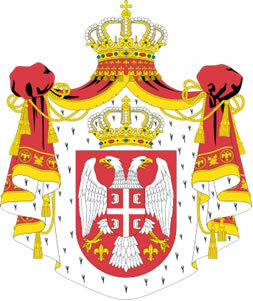Located in Europe, on the Balkan peninsula, Serbia, central country of the extinct republics of Yugoslavia and Serbia and Montenegro, is limited to the south with the Macedonia, southwest with Albania and Montenegro, west with Bosnia and Herzegovina, northwest with Croatia, north with Hungary, east with Romania and Bulgaria.
Along with Bosnia and Herzegovina, Croatia, Slovenia, Macedonia and Montenegro, Serbia was part of Yugoslavia until 2003. With the independence of these countries, Serbia and Montenegro formed a single nation until 2006, when Montenegro gained independence. The process of fragmentation of the Yugoslav republic began in 1992, a fact that triggered several conflicts between the republics that struggled for political autonomy. The attempt at ethnic cleansing, promoted by former Yugoslavia President Slobodan Milosevic, provoked the worst war on the European continent since the end of World War II (1945).
Since the disintegration of Yugoslavia, Serbia has become the most industrialized nation in the region. The capital, Belgrade, is home to industries in the oil, metallurgical, textile and food sectors, among others. National agriculture is based on the cultivation of corn, wheat, sugar beets and potatoes. However, the unemployment rate is high: 20%.
According to data released in 2010 by the United Nations (UN), the Serbian Human Development Index (HDI) is high: 0.735. The infant mortality rate is 11 deaths per thousand live births; and illiteracy affects only 3.5% of the inhabitants.
Do not stop now... There's more after the advertising ;)

Serbia Coat of Arms
Serbia data:
Territorial extension: 88,361 km².
Location: Europe.
Capital: Belgrade.
Climate: Mediterranean.
Government: Republic with mixed form of government.
Administrative division: 29 districts, the capital (Belgrade), 1 province (Vojvodina) and the province of Kosovo – under UN administration.
Language: Serbian.
Religions: Christianity 66.4% (Orthodox 57.8%, others 8.6%), Islam 17.9%, no religion 12.5%, atheism 3.2%.
Population: 9,849,846 inhabitants. (Men: 4,873,168; Women: 4,976,678).
Demographic density: 111 inhabitants/km².
Average annual population growth rate: 0.1%.
Population residing in urban areas: 52.16%.
Population residing in rural areas: 47.84%.
Life expectancy at birth: 73.8 years.
Households with access to clean water: 99%.
Households with access to a health network: 92%.
Human Development Index (HDI): 0.735.
Currency: Serbian Dinar.
Gross Domestic Product (GDP): $50.1 billion.
GDP per capita: $5,383.
External relations: World Bank, IMF, UN.
By Wagner de Cerqueira and Francisco
Graduated in Geography
Brazil School Team
countries - geography - Brazil School

